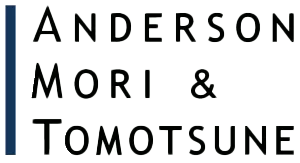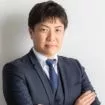Trends and Developments
Market Overview
Year in review
The leveraged buyout market in Japan has remained active throughout the COVID-19 pandemic. Recent transactions include a number of divestitures or carve-outs by Japanese conglomerates of their assets or non-core businesses to global and domestic private equity (PE) funds and other third parties. These transactions take a number of forms, including the sale of shares in subsidiaries (both private and public) that operate such non-core businesses or otherwise. Although the global pandemic resulted in a temporary slowdown in M&A activities, the market has made a robust recovery, led by foreign investors with surplus funds against the backdrop of a depreciating yen and a relatively low interest rate environment in 2022.
According to a research report published by Japan Buyout Research Institute Corporation, there were:
- 68 leveraged buyouts involving leveraged financing of JPY978 billion in 2018;
- 81 leveraged buyouts involving leveraged financing of JPY750 billion in 2019;
- 92 leveraged buyouts involving leveraged financing of JPY845 billion in 2020;
- 108 leveraged buyouts involving leveraged financing of JPY1,160 billion in 2021; and
- 120 leveraged buyouts involving leveraged financing of JPY1,634 billion in 2022.
Additionally, some of the aforementioned are followed by refinancing or recapitalisation after the closing.
Notable market trends
Upon closer examination, the data reveal three primary trends:
- The number of mega deals remains relatively high, as a result of which the deal value of leveraged buyouts for each of the years between 2018 to 2022 was generally higher compared to preceding years.
- There has been a decline in the number of mid-sized deals, but this was accompanied by a disproportionate rise in small-sized deals in 2022, such that both the number of leveraged buyouts and their aggregate deal value were higher compared to many of the preceding years; and
- There has been a gradual increase in the number of mezzanine financing in each of the years between 2018 and 2022, compared to preceding years; the number of corporate carve-outs, on the other hand, has been gradually stabilising.
The Japanese market has also seen a growing number of privatisations by way of tender offers. Some of these transactions have been initiated by PE funds, which tend to look at potential enterprise values as opposed to current share prices. In some other cases, tender offers were made by the management of target companies (ie, management buyouts) with co-investments from third parties, including PE funds.
Additionally, the number of M&A transactions triggered by business succession concerns is on a steep uptrend, and in recent years these have accounted for approximately half of the total number of buyout transactions in Japan. A number of business succession transactions also involve leveraged finance from financial institutions such as banks and private equity funds.
Residual influence of COVID-19
Since 2020, due to the global pandemic, numerous portfolio companies have been facing financial difficulties. Consequently, many have had to seek waivers of their financial covenants under the terms of their existing leveraged financing, or procure emergency credit facilities from banks. In some cases, portfolio companies, including those with some of the largest-scale leveraged financings in Japan, have been forced into bankruptcy or civil rehabilitation. Due to this development, the terms of financing offered by lenders, including minimum equity requirements, interest margins, upfront fees and financial covenants, have become more stringent compared to the pre-COVID era.
There are signs that lenders, including the Japanese "mega banks" (MUFG Bank, Sumitomo Mitsui Banking Corporation and Mizuho Bank) are now gradually returning to pre-pandemic lending terms, but they are still seeking various ways to transfer credit risk. A large number of leveraged financing transactions consist of "club deals" due to the limited number of market participants in the Japanese market, but for middle-to-large cap deals in particular, syndication is a key to a successful arrangement of leveraged financing.
Mezzanine holdco finance
In Japan, multiple tranche senior loans (with both amortisation and bullet repayment features) are the most typical method by which to finance leveraged acquisitions. Mezzanine financing is also a valid option for sponsors wishing to limit the amount of their equity contributions. Typically, mezzanine financing is provided in the form of subordinated loans or preferred shares (whether convertible or otherwise).
Over the last few years, with more sponsors seeking higher leverage or opportunities for recapitalisation before full repayment of senior loans, mezzanine loans to the holding companies of borrowers in senior loans have been gaining in popularity. Often, the main source for repayment of such holdco mezzanine loans comes from the proceeds of an IPO or a trade sale of shares in the target (including its management companies). In this regard, an overseas shareholding vehicle, such as a limited partnership organised in the Cayman Islands is often designated as the borrowing entity of such holdco mezzanine loans.
Such holdco mezzanine loans are structurally subordinated to senior loans, as a result of which no intercreditor agreement is generally required between senior lenders and holdco mezzanine lenders. While the structure of holdco mezzanine loans varies depending on the time at which such holdco mezzanine loans are obtained, it is often the case that no security interest over shares in the senior borrower or target group companies is created in favour of the lenders of holdco mezzanine loans, in order to avoid any conflict with security interests in favour of senior lenders. In some transactions, lenders have the right to require a borrower to dispose of its shares in the senior borrower upon the occurrence of an event of default, to the extent that the exercise of such mandatory disposal right does not conflict with the interest of the senior lenders.
Adoption of LMA-Based Facility Terms
Overview
In the Japanese market, a substantial part of acquisition finance transactions is documented based on the standard forms of facility agreements published by the Japan Syndication and Loan-Trading Association (JSLA).
Compared to the global form of the facility agreement (including the model form provided by the Loan Market Association (LMA)), traditional forms of facility agreements in Japan require negative undertakings on the part of borrower more generally, without default carve-out provisions. This allows for a broader range of authority and discretion on the part of lenders in their decision-making on loan disbursement and waiver of contractual breaches. For example, leading arranger banks in Japan tend to hold a substantial portion (of 30% to 40%, and sometimes more) of the loan facilities even after syndication. Such leading arrangers also often take on the roles of facility agent and main bank of the target group (ie, the role of relationship bank) and are generally amenable to approving exemptions and waiver of non-material contractual breaches.
In recent years, with the increase in inbound investments by global PE funds, sponsors often request for facility agreements to be based on the LMA template, or to incorporate borrower-friendly terms commonly adopted in the global acquisition finance market.
Certain funds provision
One of the most heavily negotiated provisions in loan documentation is the conditions precedent provision for loan disbursement. In Japanese acquisition finance transactions, such conditions precedent typically include, among others:
- absence of any breach by the borrower and target group companies of the relevant finance documents, including related undertakings;
- absence of any event of default;
- absence of any material adverse change in the assets, financial condition, business or prospects of the target group companies ("Target MAC"); and
- absence of any material adverse change in financial or market conditions ("Market MAC").
In recent years, sponsors (including in Japan) have been increasingly inclined to negotiate limitations to the number of conditions precedent in loan documentation by incorporating certain funds (or "Sungard)" provisions, which are commonly adopted in acquisition finance transactions in the USA and UK. More specifically, sponsors now often ask for, among other things:
- exclusion of matters related to the target companies and their businesses from the scope of representations, undertakings and events of default in the conditions precedent; and
- elimination of the absence of Target MAC and Market MAC from the conditions precedent.
Although the terms and conditions of financing differ from transaction to transaction, the concept of "certain funds" is gradually being adopted mainly for transactions involving global sponsors (including major co-investors) and foreign-based sellers.
Permitted actions
Internationally, facility agreements often contain a certain range of permitted actions, typically incorporated in the definitions section or appendices, that constitute exemption from borrower contractual undertakings. These commonly include permitted financial indebtedness, security interest and guarantee, loans, distributions, disposal, acquisitions, joint ventures and corporate reorganisations. Nevertheless, such general carve-out provisions are not ordinarily found in facility agreements in the traditional Japanese market. Such general and presupposed carve-out provisions are not usually acceptable to lenders in Japan unless individually justified by operational and financial forecasts. In recent years, however, global PE funds have increasingly been requesting the inclusion of permitted actions in facility agreements in Japan. In this regard, a significant point of contention is the concept of permitted acquisition and the capacity to raise an incremental (accordion) facility as permitted financial indebtedness, which allows the borrower to acquire new subsidiaries or businesses, and to obtain new loans for funding such acquisitions. Recently, roll-up transactions have also become more prevalent in Japan.
Other topics
In addition to the above, negotiations in global sponsor deals are likely to include the scope of repeating representations, borrowers' capacity for equity cure of a breach of financial covenants, and conditions (including the requirement for borrowers' consent) for loan assignments.
Legal Updates
Security trust and parallel debt structure
Under Japanese law, it is a commonly accepted doctrine that the holder of a security interest must be the same person as the creditor of the claims that are secured by the security interest. Accordingly, the practice in Japan is for each lender in a syndicated loan transaction to be a secured party because a security agent is not permitted to hold a security interest securing claims owed to the lenders on their behalf. This has presented an obstacle to general syndication as an assignment of secured loans requires changes to be made to the security interest already created.
One way of circumventing this difficulty is the concept of the security trust, introduced by an amendment to the Trust Act of Japan in 2006, allowing a trust company licensed under the Trust Business Act of Japan to act as a security trustee that is permitted to hold a security interest securing claims held by lenders. Under a security trust, no individual transfer and perfection procedures are necessary in respect of a security interest when a secured creditor assigns its secured claims. This is because the security holder will continue to be the security trustee even in the event of any change in the holder of the secured claims. In practice, however, security trust schemes are frequently used for syndicated loan transactions in Japan. This is presumably, to some extent, due to the lack of conformity of the security trust system with other relevant laws and practices in Japan, including the registration procedures required for real estate mortgages. The fact that a large part of syndicated loans are "club deals" (as opposed to "general syndications") may be another contributing factor to the infrequent use of security trusts.
Another alternative is a debt structure under which a security agent holds a security interest securing a debt owed by the borrower to the security agent, where such security interest is created in parallel with the actual debts owed by the borrower to the lenders. Debt structures of this kind may be common in some jurisdictions, especially where a security trustee structure is not available. With that being said, this structure has not been employed in the Japanese market except in cases where parallel debt structures are governed by the law of a jurisdiction other than Japan (such as English law or New York law).
However, use of the parallel debt structure in Japan could be boosted by the amendments to the Civil Code of Japan that came into effect in April 2020, which explicitly introduced the concept of joint and several claims among multiple creditors created by a contract with features similar to a parallel debt structure. Although it was generally understood, even before the Civil Code amendments, that joint and several claims of this kind could be validly created, the Civil Code amendments have prompted discussion of the feasibility of a parallel debt structure under Japanese law. In view of these developments, it is anticipated that the Civil Code amendments will soon be used in practice as the legal basis for a parallel debt structure in future transactions.
Discussion concerning business floating charge
Under Japanese law, there is no concept of a blanket security interest over all assets of a person or entity, such as a floating charge. Accordingly, security interest needs to be created individually over every secured asset.
In this connection, discussions on the establishment of a new regime of "business growth charge" (jigyou seichou tampo ken) to create a floating charge over all assets, including intangible assets (such as goodwill), have been ongoing within the Financial System Council (a working group within the Financial Services Agency of Japan) since 2022. The main purpose of the business growth charge is to facilitate smooth fundraising for small and medium-sized enterprises and start-ups that do not possess substantial tangible assets. However, it also presents the possibility of a new security regime for acquisition finance. According to the latest report by the Financial System Council, the chargee in a business growth charge is contemplated to be a security trustee specifically granted with a special trust licence. Needless to say, industry players are closely monitoring these developments.
ESG finance
ESG finance is getting more attention in the Japanese finance market. For example, according to the Ministry of the Environment (MOE) of the Government of Japan, the number of green loan deals has increased from one in 2017 to 179 in 2022. The Japanese government is also encouraging expansion of ESG finance transactions through various initiatives, including the issuance of MOE guidelines for green loans, green bonds, sustainability-linked loans and sustainability-linked bonds.
So far, the impact of ESG-related issues on the terms and conditions of acquisition finance documentation in Japan has been limited, but this is expected to change as ESG concerns grow in significance.
Originally published by Chambers and Partners - Global Practice Guide (Acquisition FInance 2023).
The content of this article is intended to provide a general guide to the subject matter. Specialist advice should be sought about your specific circumstances.



